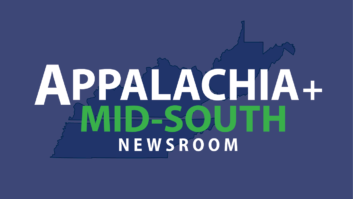SYDNEY � Radio has strengthened its position as Australia�s favorite and most-listened-to form of audio entertainment, with time spent listening on mobile devices increasing over the past year, according to the second �Australian Share of Audio� study by GfK, as reported by Commercial Radio Australia.
The survey measures listening to all forms of audio, including radio, owned music collections, streaming services, podcasts and online music videos, and found that Australians spend 65.3% of audio time (or two hours and 10 minutes) per day, listening to live Australian radio.
Importantly, Radio�s share of listening increased from 64.9% a year ago, driven by an increase in listening to radio via mobile streaming apps.
�The research shows radio is continuing to dominate the battle for ears in a rapidly evolving audio landscape,� said Joan Warner, chief executive of Commercial Radio Australia. �The amount of time spent listening to Australian radio via various mobile radio apps, while still relatively small, has also increased to 2.4% of listening from 1.0% a year ago.�
The GfK survey was conducted with a nationally representative sample of 1,500 Australians aged 10+ from June 25 to July 22, before Pandora shut down its Australian services on July 31. The Share of Audio was released at the Radio Alive 2017 conference in Melbourne, and can be seen in more detail here.
Should we look to streaming as the future of radio?
It may seem a bit ridiculous to point out that streaming has increased in Australia by 240% in one year… considering that its use went from 1% to 2.4%.� Still, the idea is worth considering.� Let�s look at some remarks made by the President of WorldDAB.org, Patrick Hannon, as he addressed the same basic questions.� His remarks were reported in asiaradiotoday.com.
�The DAB or mobile networks argument is something we often hear at events and in conversation with DAB sceptics. But do the claims for mobile platforms provide a complete and accurate picture?� said Hannon.� �To address this issue, we have�spoken to industry experts from the radio and mobile worlds to better understand the potential and limitations of 4G and 5G services.
�It�s clear that mobile can provide a complementary service to broadcast radio � but to deliver a comparable service would require a massive investment and there is no business case for mobile operators or broadcasters to fund it.�
Hannon went on to point out that there are four reasons why mobile is inferior to DAB+ as a distribution platform for radio.
Infrastructure costs. Providing DAB+ coverage is much easier and requires significantly lower investment in infrastructure than trying to deliver equivalent coverage for radio via mobile. A handful of transmitters can deliver DAB+ across wide areas, compared to thousands of sites for 3G or 4G services.
DAB is a much more cost-effective way of reaching large numbers of people. Research from the EBU calculated the cost of distributing radio for an �average� European national broadcaster. DAB costs are around $2m capex plus $1m opex per year � but if broadcasters switch to IP these costs jump considerably to $9.8m per year.� (One could make the case here there the cost to broadcasters is irrelevant to listeners and that streaming providers are accustomed to paying for it already�editor.)
Cost to listeners. Broadcast radio has always been free-to-access compared to mobile services where data needs to be paid for. Listening to radio over mobile would require around 2.2GB of data per month (based on the EBU�s average radio listening figures) � this needs to be paid for by someone, most likely the listener.� (With many unlimited plans most users wouldn�t have any issues with 2.2 GB of downloads�editor.)
The risk of gatekeepers. �As a free-to-access service, broadcast radio gives equal weight to all stations and services. Mobile platforms can be controlled by a gatekeeper � potentially denying priority to established broadcasters. �(Net-neutrality could easily come in to play here as well-editor.)
Reliability in emergencies. Broadcast radio delivers to millions of people, can be relied upon in times of emergency and is free-to-access. In times of emergency or crisis, radio can be relied upon to get information out to people. In contrast, it is at exactly these times that mobile networks are most likely to become overloaded and fail to cope with demand, leaving people unable to make or receive important calls.
I would like to point out that there are numerous organizations willing to spend the billions of dollars necessary to build infrastructure that can (at least) more easily handle the traffic load presented by hundreds of thousands of unicast connections that support on-line listening.� As broadcasters we can�t bury our heads in the sand.� I believe most of what Mr Hannon is saying is true, but technology is evolving fast.� What is true today may not be true a year hence.��
�







